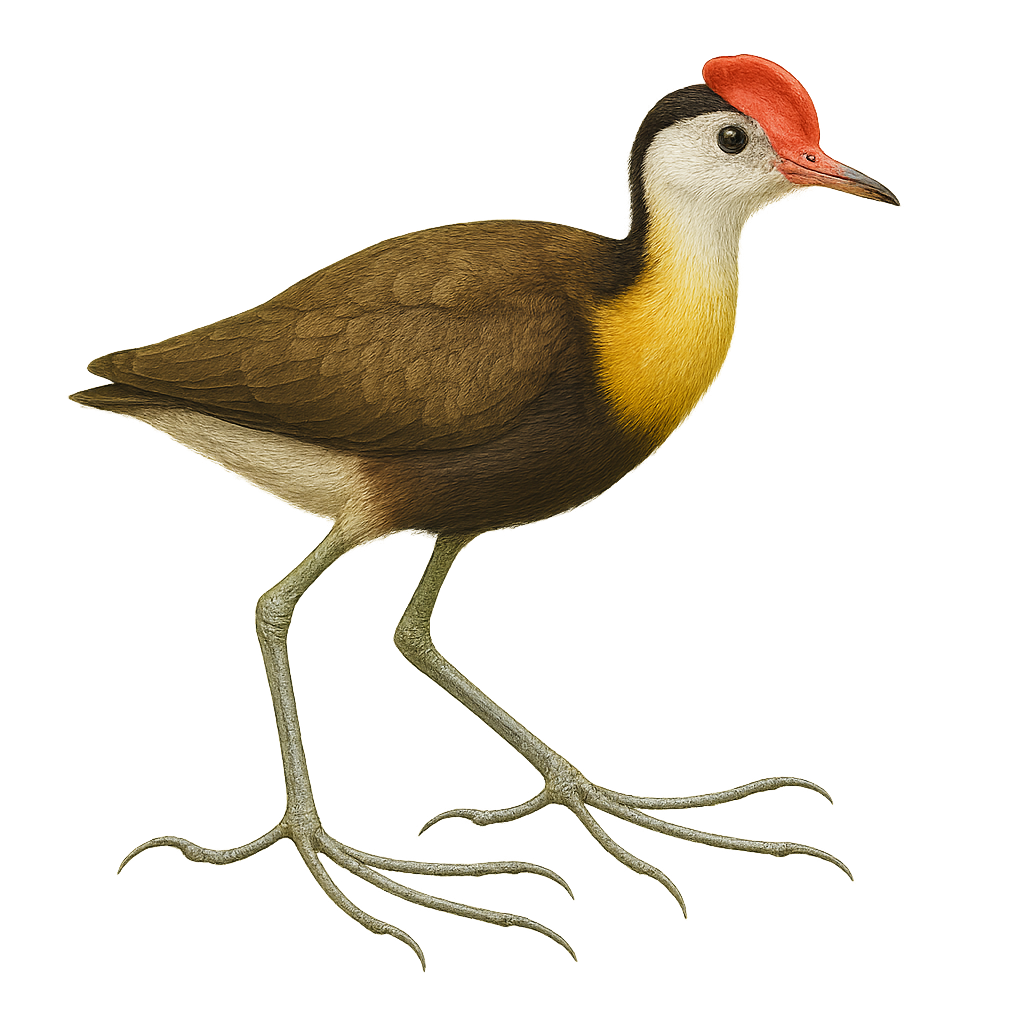Your wildlife photography guide.
Explore the comb-crested jacana in detail, study its behavior, prepare your shots.
Where to observe and photograph the comb-crested jacana in the wild
Learn where and when to spot the comb-crested jacana in the wild, how to identify the species based on distinctive features, and what natural environments it inhabits. The WildlifePhotographer app offers tailored photography tips that reflect the comb-crested jacana’s behavior, helping you capture better wildlife images. Explore the full species profile for key information including description, habitat, active periods, and approach techniques.
Comb-crested Jacana
Scientific name: Irediparra gallinacea

IUCN Status: Least Concern
Family: JACANIDAE
Group: Birds
Sensitivity to human approach: Suspicious
Minimum approach distance: 10 m
Courtship display: September to October
Incubation: 22-24 jours
Hatchings: September to November
Habitat:
Wetlands, marshes, lakes
Activity period :
Primarily active during the day, with peak activity in the morning and late afternoon.
Identification and description:
The Comb-crested Jacana, known for its long legs and slender toes, is a fascinating aquatic bird primarily inhabiting the wetlands of Australia and New Guinea. It is easily recognizable by its bright red comb and golden-brown plumage. This bird is an excellent swimmer and walker on water lilies, thanks to its long, thin toes that distribute its weight. The Comb-crested Jacana is polyandrous, meaning the female mates with several males, leaving them responsible for incubating the eggs and caring for the young. It primarily feeds on insects and other small invertebrates found on the water's surface.
Recommended lens:
400 mm – adjust based on distance, desired framing (portrait or habitat), and approach conditions.
Photography tips:
To photograph the Comb-crested Jacana, focus on wetlands early in the morning or late afternoon to take advantage of soft light. Use a telephoto lens of at least 400mm to capture precise details without disturbing the bird. Be patient and discreet, as this bird can be suspicious. A tripod can be helpful to stabilize your camera, especially if using a long focal length. Remember to check the weather, as wet conditions can affect your equipment.
The WildlifePhotographer App is coming soon!
Be the first to explore the best nature spots, track rutting seasons, log your observations, and observe more wildlife.
Already 1 439 wildlife lovers subscribed worldwide

